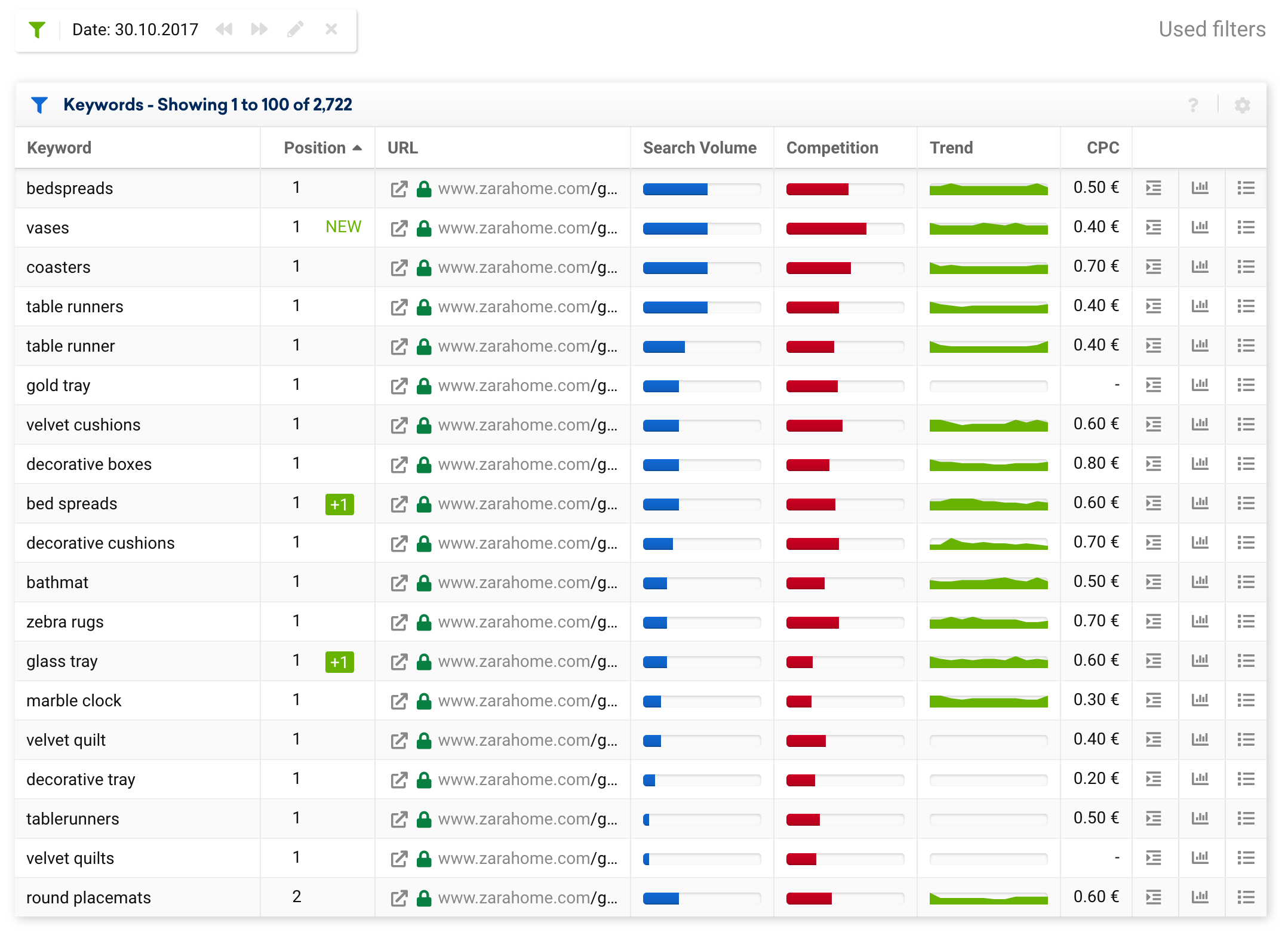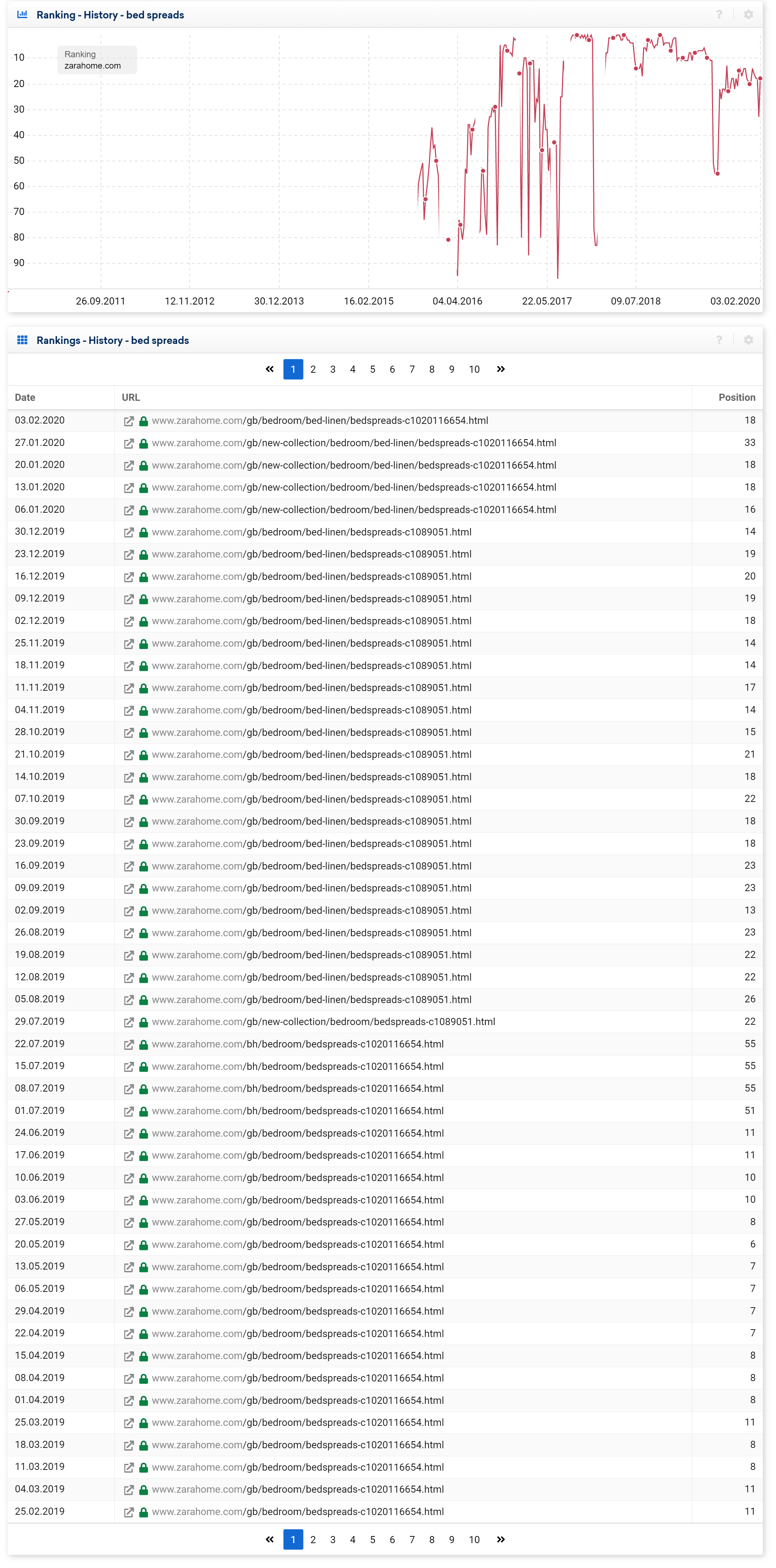The Visibility Index allows anyone to analyse the relative size, growth rate or major changes in a domains search visibility over time. It helps with monitoring, digital due-diligence, competitor analysis and pitch-preparation. The Visibility Index history for Zarahome.com has a story to tell, and it includes huge periods of lost visibility. In this article we analyse the Zara Home rollercoaster. Why did they lose so much visibility over the years?
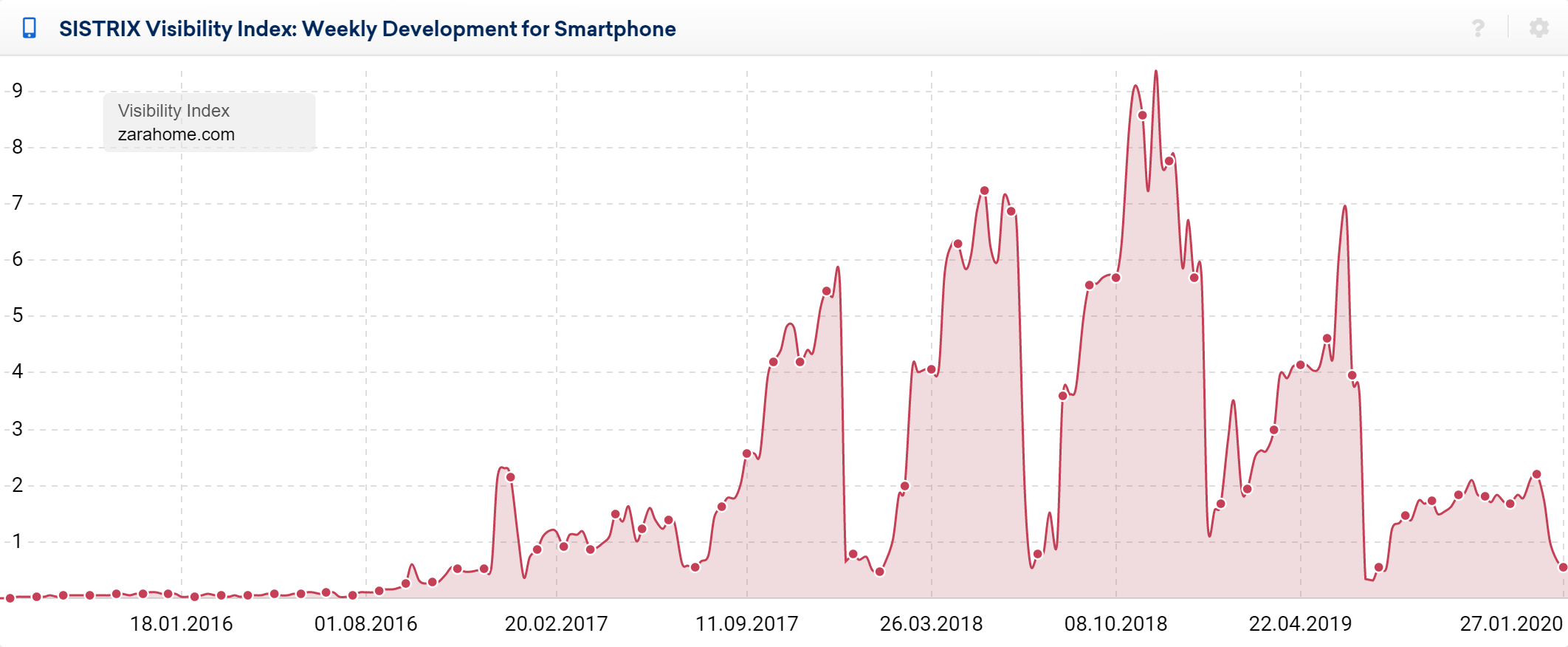
The graph above shows the historical search visibility for zarahome.com. Effectively, it’s the domain’s Google search market share over the last 5 years. For anyone with a digital strategy, or competing with others that do, it’s an important performance graph. The question here is, why are there so many gaps for zarahome.com?
The immediate thought could be that of seasonal traffic including sales and holiday periods that affect traffic, however, SISTRIX measures search visibility, not traffic. The Visibility Index values use annually averaged traffic.
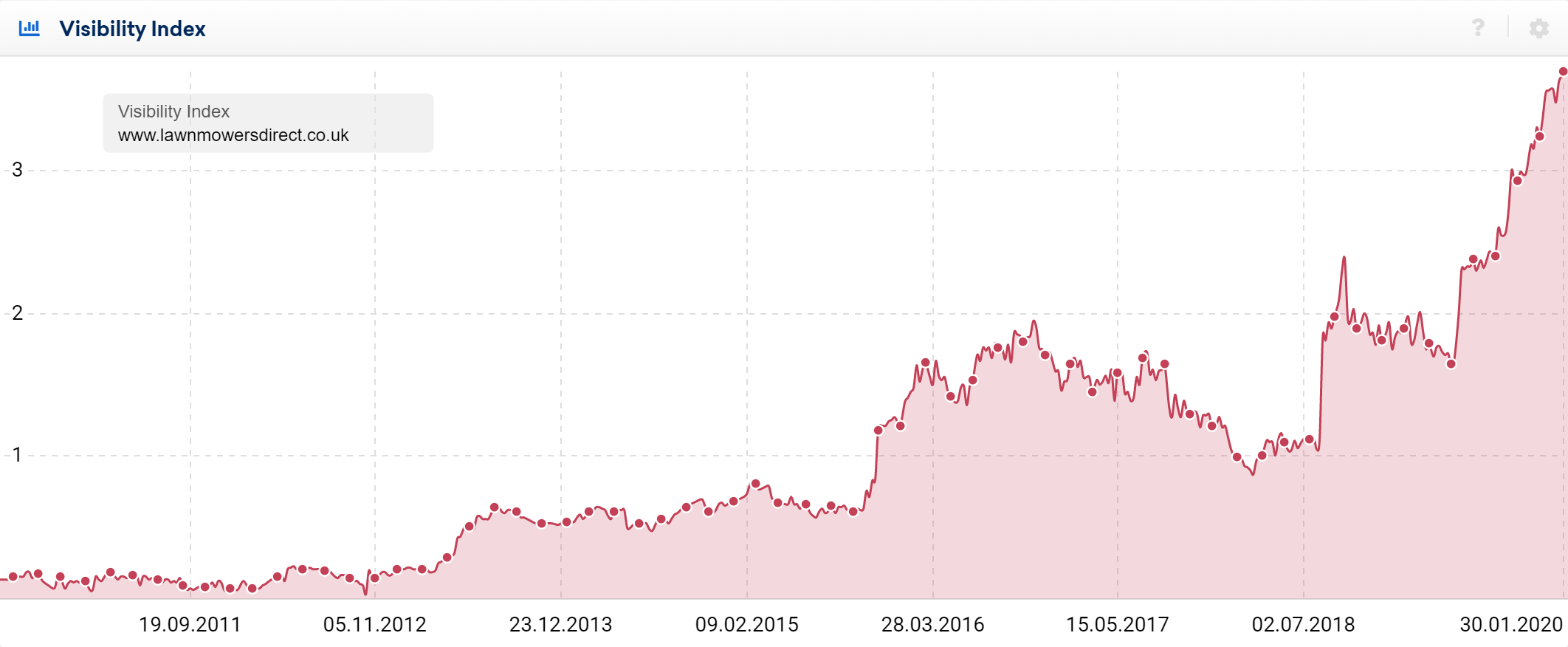
Take a look at this graph. Only the maddest of British gardeners would be searching for a lawn mower in the middle of Winter, and yet the Visibility Index for lawnmowerdirect.co.uk is at an all time high in Jan 2020. When the searches start, peaking at the end of March according to Google Trends, this domain will be well positioned to benefit from search traffic. Visibility comes before traffic.
If it’s not seasonal traffic then, why the visibility rollercoaster?
The drops have occurred regularly since 2017, at the end of Dec and the end of June which gives us some ideas as to what might be happening within the business. Sales, perhaps? The best clue comes when we look at the directory-level visibility.

In the graph above you’re looking at the three most-visible directories under the /gb (Location: Great Britain) directory. The red line is the /new-collection directory, and appears to gain visibility as the other directories drop in visibility in early 2019.
A search (Google, Twitter, Instagram) shows that the Zara Home new collection Spring Summer (SS) is marketed starting in Jan, and the AW collection starting in July.
What we need to find out is why the visibility dropped when the new collection was launched. We can do that by using the historical SERPs data to go back in time and see what URLs were ranking.
Using the archived SERPs we can track the URLs that were ranking for keywords at a particular time to find out how Google ranked the content, and which URL was ranking at the time.
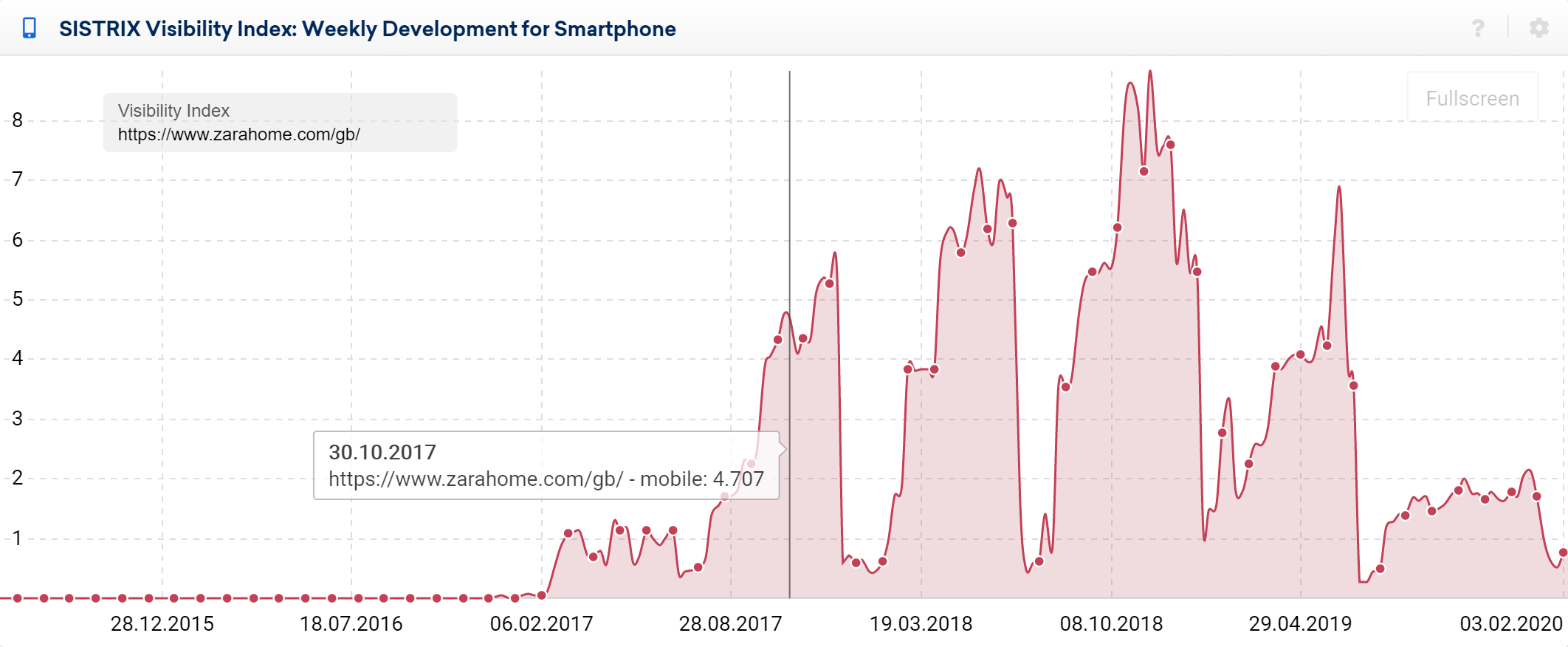
In this example we take a historically ranking keyword data from a high-point in 2017. Tip: A right-click on the graphic will allow you to list all the ranking Visibility Index keywords for that domain, on that date.
Clicking on the right-hand “show keyword history” column 1 for the “bed spreads” entry and then selecting “show complete history” at the bottom of the list of results, we expose the complete URL ranking archive for this domain with this keyword.
The full screenshot above shows a graphical overview along with the most recent data on dates, URLs and positions in the table below. Without having to page through the results, we can already see there are interesting changes e.g 2 which highlights a ‘new collection’ URLs.
In this case, the previously ranking URL is taken over by the new collection URL but in other cases over the history, there’s a complete loss of ranking URL, URLs that are now defaulting to top-level categories and even international URLs.
The hypothesis is that for every new collection, either the old URLs are redirected to similar new-collection pages for a period, or, the new collection pages have had strong internal linking and have become the preferred URL by Google. When the new collection pages are later removed, Google then ranks a completely new, or previously ranking URL. There’s no evidence of cannibalisation, which would indicate redirects are the cause here, rather than additional URLs.
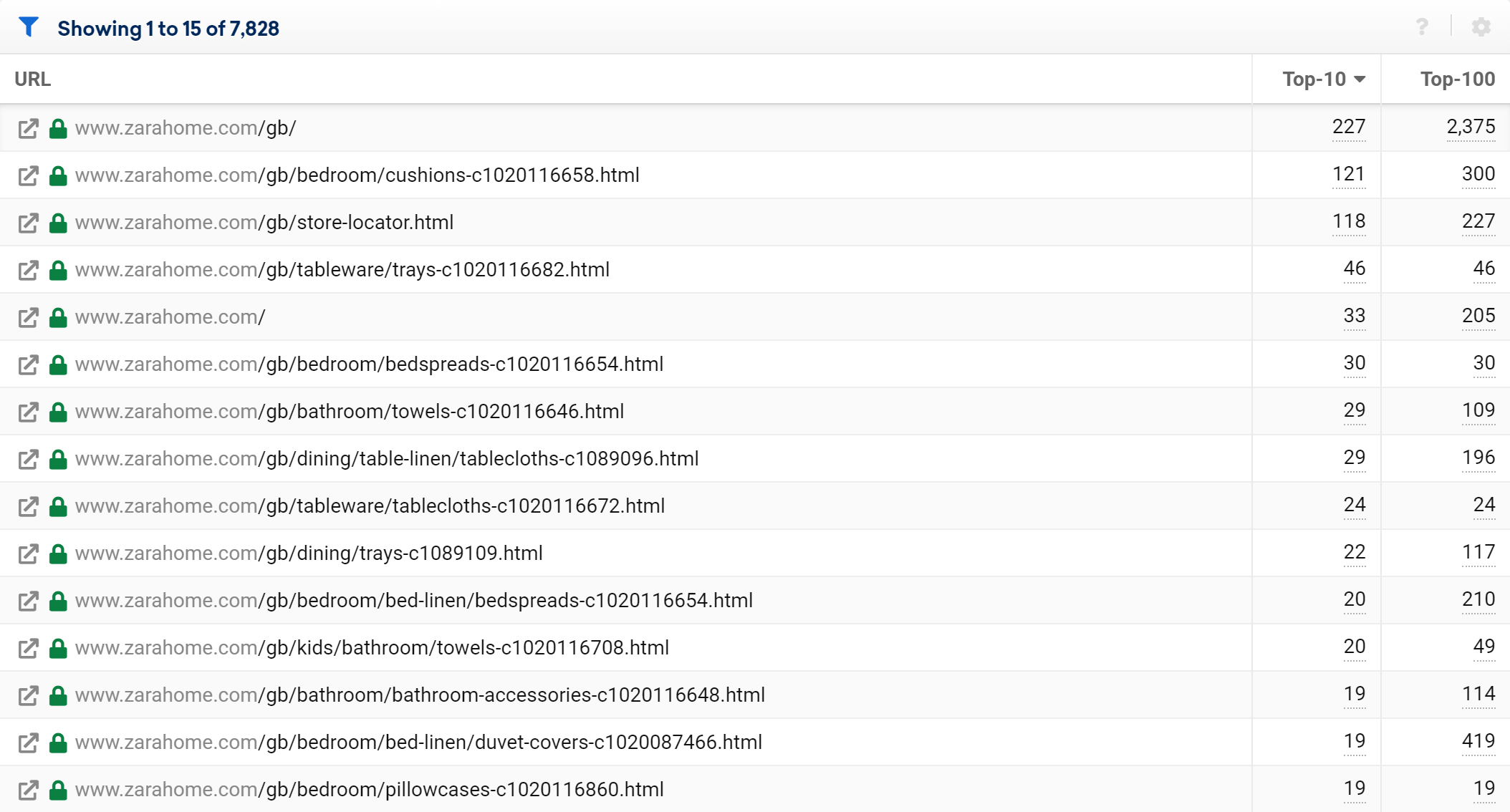
The lesson to be learnt? Redirecting important URLs to ones with different content can have bad consequences. It’s easy to find out which URLs are valued by Google and those URLs should be taken care of with ever-improving content and experience.

